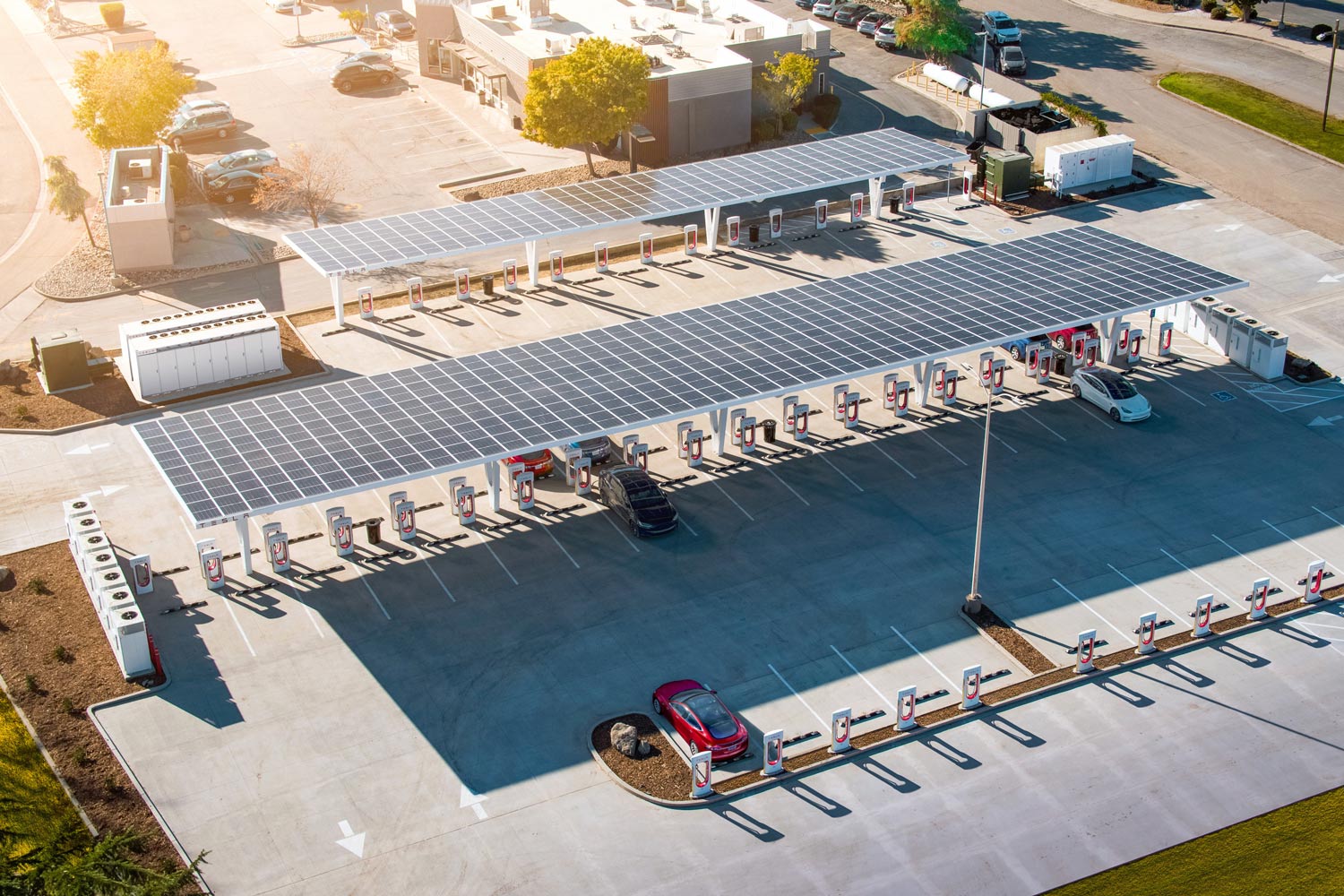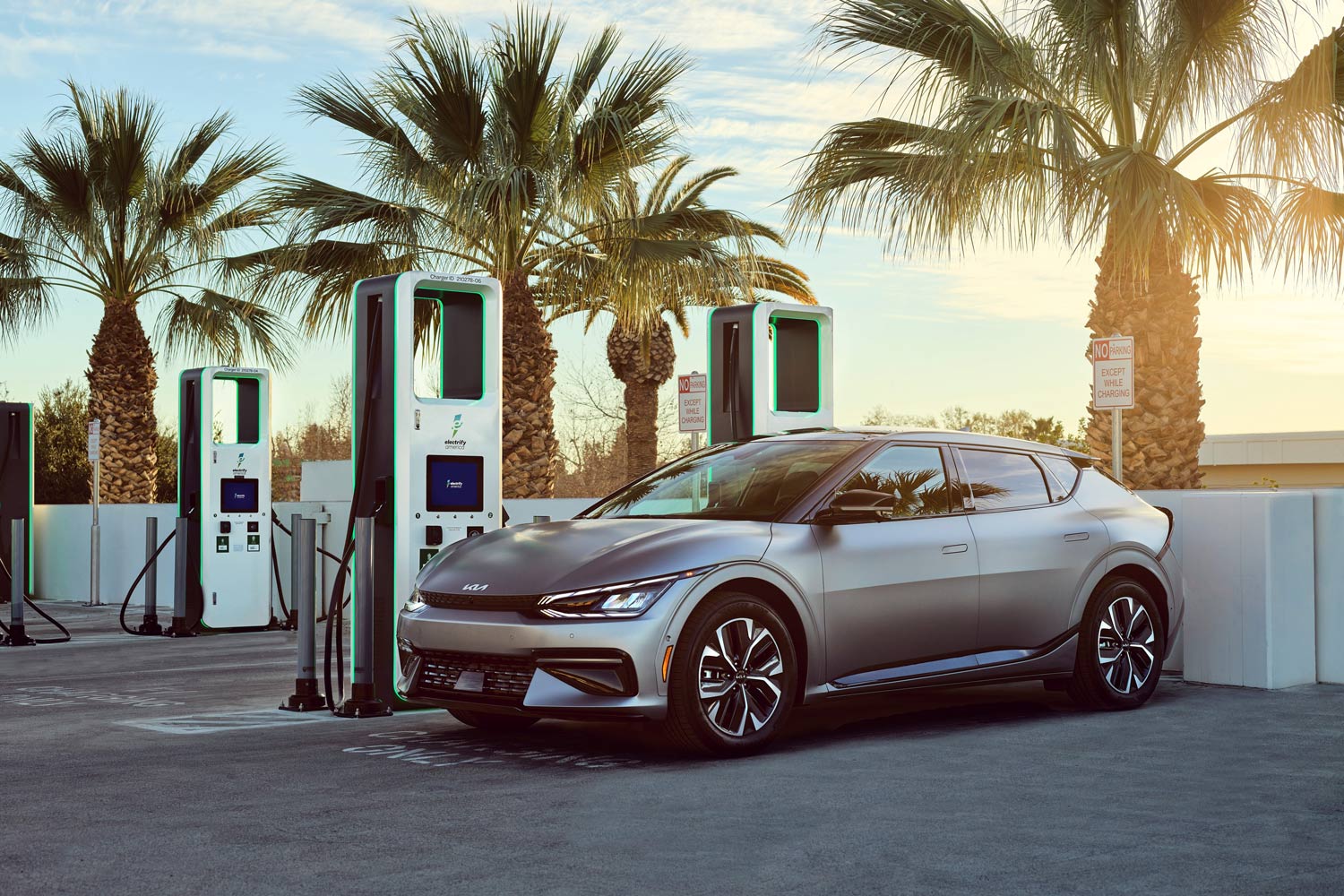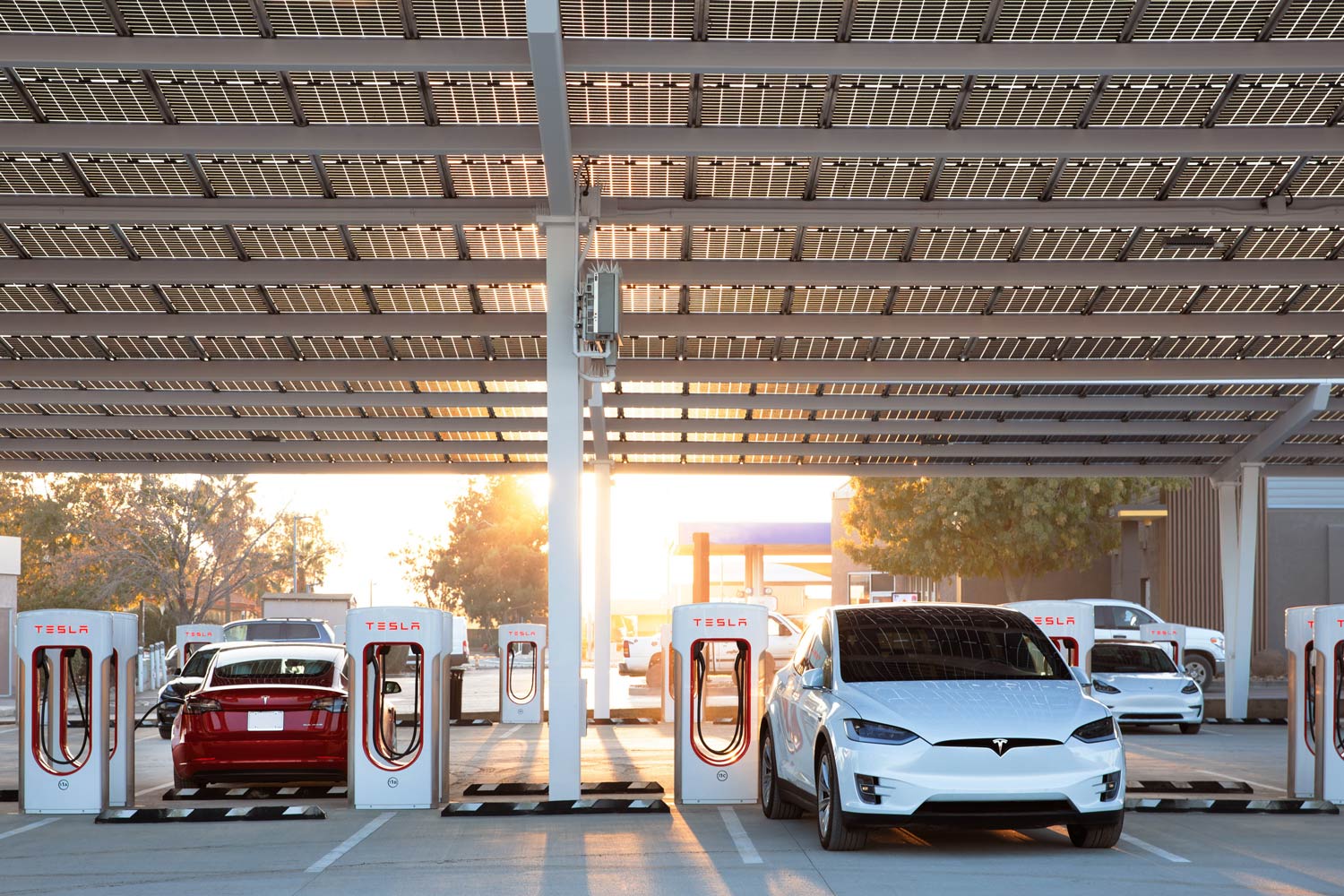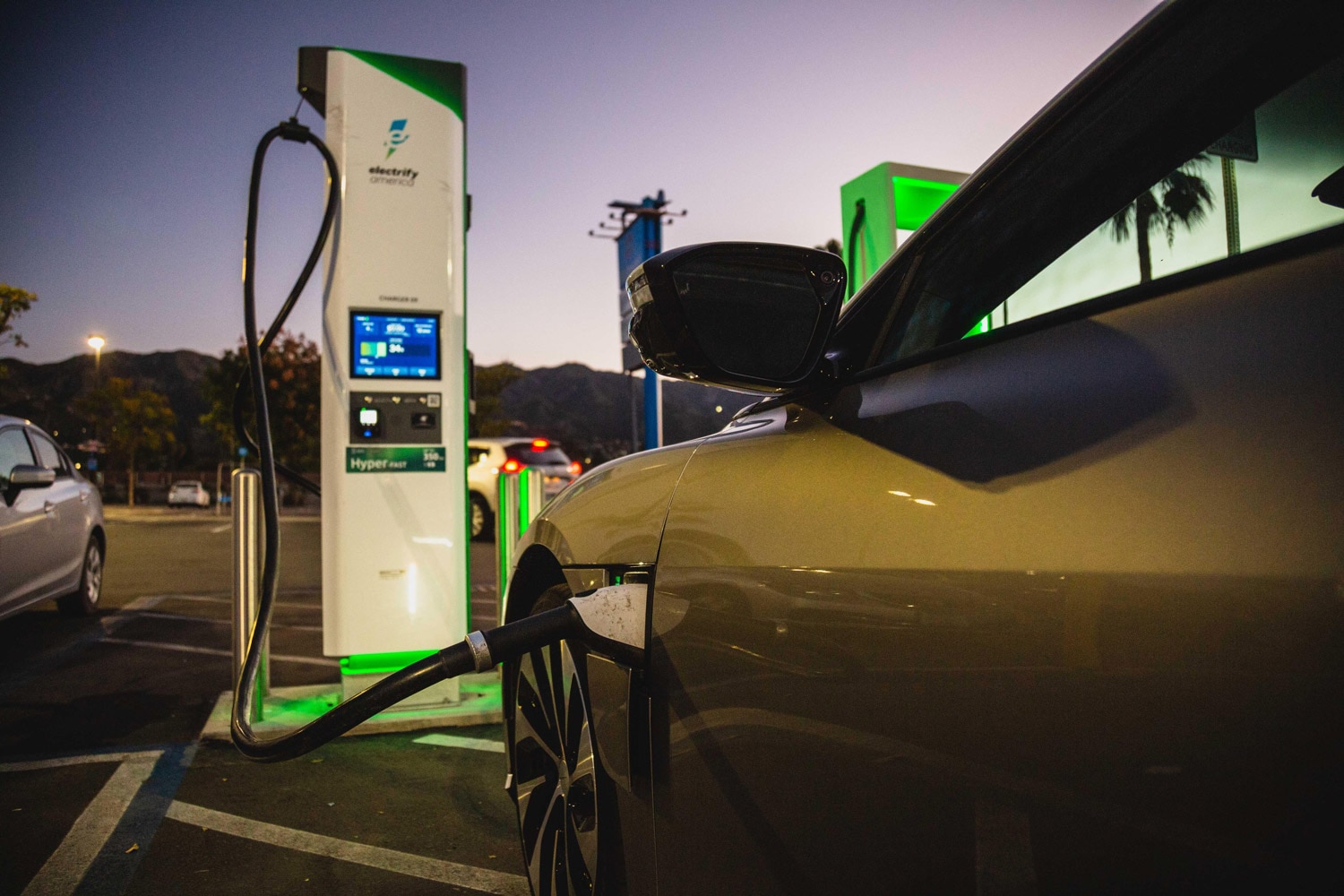Is Faster EV Charging the Answer to Electric-Car Range Concerns?
With purchase prices getting more competitive, the next breakthrough for EV acceptance may be charge-ups that are as quick as gas fill-ups.
 Tesla
Tesla
Tesla's groundbreaking long-range electric cars continue to dominate a now-booming market, with nearly four of five new EVs in the U.S. sold by Elon Musk's company.
But with automakers increasingly matching the driving stamina of Teslas — or surpassing them, as the 516-mile Lucid Air can — attention shifts to Tesla's other formidable edge in persuading consumers to go electric: a coast-to-coast network of powerful Supercharger stations where up to 200 miles of driving range can be added in 15 minutes.
Together, the greater driving range of new models, and the availability of faster recharges, go a long way toward relieving the anxiety of potential buyers who have held off because they fear the prospect of a depleted battery before reaching the next recharge point.
More Powerful EV Chargers Bring Multiple Benefits
Charging speed represents a new front in the quest to switch vehicle buyers to battery power from gasoline. When high-power charging becomes widely available, stops to replenish the battery become shorter, and road trips take fewer hours. Longer term, it will mean that EVs can get by with smaller batteries, making them more efficient by cutting weight — and cheaper to purchase, as the battery is the most expensive component of an EV.
EV chargers are not created equal. The most basic charging, called Level 1, uses a standard 120-volt household current and may take 24 hours or more to recharge a typical EV. Level 1 is a refill of last resort in today's EV world, at best a casual top-up for a plug-in hybrid.
A Level 2 charger, found in many public locations and the go-to unit for home garage installation, uses a 240-volt circuit and a higher current flow. These units, which have become increasingly capable in recent years, can replenish the battery in most of today's EVs overnight or during a long day at the workplace. With either level 1 or 2, they take the ordinary AC electricity available to homes and use it to charge an EV's battery.
 Kia
Kia
What Is EV Fast Charging?
For drivers who need to add a serious number of miles in a short time, the best solution is a fast charger that delivers DC, or direct current electricity. These units — Tesla's Superchargers, for example — deliver electrons straight into the car's battery pack.
Fast ev charging stations can bring a battery to 80% full in about 30 to 40 minutes, depending on the battery's capacity and the car's systems. Those times continue to drop. Hyundai Motors' EV compact crossover trio — Ioniq 5, Kia EV6, and Genesis GV60 — can juice batteries from 10% to 80% full in just 18 minutes. That's about 70 miles of range added in five minutes, arguably quick enough to make all-day interstate travel a reality.
Those bathroom-break speeds require 350-kilowatt fast chargers, which are beginning to gain a toehold along U.S. highways. Cars designed to accept that torrent of energy are, however, relatively recent arrivals on the market. Tesla's latest Superchargers operate at up to 250 kilowatts.
Shoppers who prioritize fast refills should seek an EV with a maximum charging rate of at least 100 kilowatts. According to S&P Global Mobility, about 40% of EVs built in 2021 can sustain peak charging above that rate. By 2030, about half of EVs are expected to charge at or above 200 kilowatts. For now, the Chevy Bolt maxes out at a lethargic 55 kilowatts, but recent models from Hyundai Motors brands can charge at up to 240 kilowatts, nearly five times faster.
 Tesla
Tesla
Faster EV Charging vs. More Range
The steady reduction in charging times, and the growth of charging infrastructure, may mean a diminishing return when it comes to stretching out the driving range on a full charge. After all, even commercial truck drivers are limited to as few as 11 hours of driving a day.
With more than 1,700 Supercharger stations in the U.S., representing nearly 17,000 individual Superchargers, Tesla has more fast-charging outlets than all other networks combined, according to the advocacy group EVAdoption. ChargePoint, the largest non-Tesla network, has more than 68,000 charging spots, but only about 1,500 of those are Level 3 fast-charging units.
More plug-in models are found on California roads than any other state. The state dominates the charging landscape, too. Yet "charging deserts" — cities and regions with few charging oases — remain a major source of frustration in both California, and across the country, as EV adoption increases.
 Manuel Carrillo III | Capital One
Manuel Carrillo III | Capital One
The Future of Fast Charging for EVs
Innovations in batteries will make charging even faster, according to Venkat Srinivasan, director of the Argonne Collaborative Center for Energy Storage Science. Those include battery anodes — the negative terminals — made largely of silicon, which are expected to become widely used in coming years.
"Silicon will largely solve fast charging," Srinivasan says, potentially enabling charges in 15 minutes or less. Still, the perceived scarcity of public charging remains a leading barrier to broad EV adoption.
"Public charging needs to not only support people who don't have private access, but as a safety net for consumers who have range anxiety," said Brent Gruber, senior director of global automotive at J.D. Power, referring to the wariness over being stranded by an empty battery. "Unfortunately, the availability of public charging is the least satisfying aspect of owning an EV."
That's the takeaway from J.D. Power surveys of EV owners, in which satisfaction with public charging — whether speedy DC charges or slower Level 2 fill-ups — has now declined for three straight quarters. That's especially bad news, Gruber says, as mainstream consumers try their first EV, lured in part by automakers — including Ford, Volkswagen, General Motors, Hyundai, Nissan and Audi — who offer a few years of free or discounted charging.
The effort to expand public fast charging is underway. President Biden's bipartisan infrastructure law will provide $5 billion to create a charging network along designated Alternative Fuel Corridors, largely along interstate highways. The administration wants to see 500,000 new charging stations in place by 2030.
Still, that push will struggle to meet exploding EV demand: Sales of electrified cars, including plug-in hybrids, have soared even despite supply setbacks, and automakers continue to roll out new models.
Written by humans.
Edited by humans.
 Lawrence Ulrich
Lawrence UlrichLawrence Ulrich is an award-winning auto writer and regular contributor for a variety of national newspapers, magazines, and web sites. He and his territorial cat are Brooklyn-based. Lawrence is also the proud owner of a fast-but-frustrating 1993 Mazda RX-7 twin-turbo R1.
Related articles
View more related articles